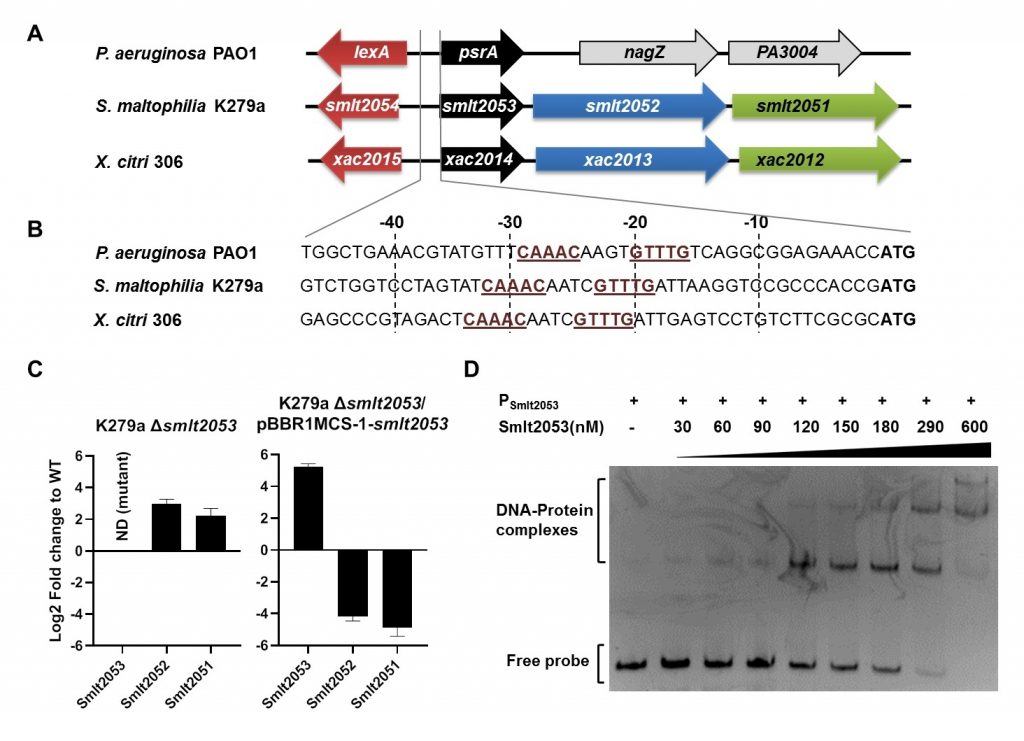Appl Environ Microbiol. 2023 Jun 5:e0063523. doi: 10.1128/aem.00635-23. PMID: 37272812.
ABSTRACT

Stenotrophomonas maltophilia is an environmental bacterium as well as an emerging opportunistic multidrug-resistant pathogen. They use the endogenous diffusible signal factor (DSF) quorum sensing (QS) system to coordinate population behavior and regulate virulence processes but can also respond to exogenous N-acyl-homoserine lactone (AHL) signals produced by neighboring bacteria. The effect of these QS signals on the global gene expression of this species remains, however, unknown. Whole-transcriptome sequencing analyses were performed for exponential cultures of S. maltophilia K279a treated with exogenous DSF or AHLs. Addition of DSF and AHLs signals resulted in changes in expression of at least 2-fold for 28 and 82 genes, respectively. Interestingly, 22 of these genes were found upregulated by both QS signals, 14 of which were shown to also be induced during the stationary phase. Gene functions regulated by all conditions included lipid and amino acid metabolism, stress response and signal transduction, nitrogen and iron metabolism, and adaptation to microoxic conditions. Among the common top upregulated QS core genes, a putative TetR-like regulator (locus tag SMLT2053) was selected for functional characterization. This regulator controls its own β-oxidation operon (Smlt2053–Smlt2051), and it is found to sense long-chain fatty acids (FAs), including the QS signal DSF. Gene knockout experiments reveal that operon Smlt2053–Smlt2051 is involved in biofilm formation. Overall, our findings provide clues on the effect that QS signals have in S. maltophilia QS-related phenotypes and the transition from the exponential to the stationary phase and bacterial fitness under high-density growth.IMPORTANCE The quorum sensing system in Stenotrophomonas maltophilia, in addition to coordinating the bacterial population, controls virulence-associated phenotypes, such as biofilm formation, motility, protease production, and antibiotic resistance mechanisms. Biofilm formation is frequently associated with the persistence and chronic nature of nosocomial infections. In addition, biofilms exhibit high resistance to antibiotics, making treatment of these infections extremely difficult. The importance of studying the metabolic and regulatory systems controlled by quorum sensing autoinducers will make it possible to discover new targets to control pathogenicity mechanisms in S. maltophilia.
